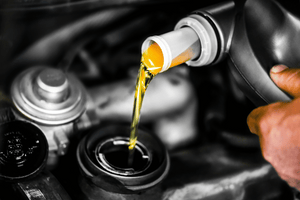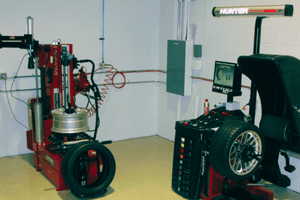Porsche Track Prep Checklist: What You Need Before Your First HPDE Event
High-performance driving events aren’t casual weekend cruises. They’re controlled environments built to expose the truth about your car’s condition, your driving technique, and your ability to manage both under sustained load. When you bring a Porsche to the track—whether it’s a Cayman, 911, or Taycan—you’re putting a precision-engineered machine into a high-stress scenario it was designed for but rarely experiences. The car might be ready on paper. That doesn’t mean it’s ready in reality.
This checklist outlines the critical items every Porsche owner must address before their first HPDE. Skip steps, and you’re gambling with your safety and your wallet. Follow the process, and the event becomes the closest thing to a motorsport master class you’ll experience without a race license.
1. Brakes: The Make-or-Break System
Track driving punishes braking systems far beyond anything seen on public roads. Porsche equips its vehicles with high-quality components, but factory pads and fluid aren’t built for prolonged high-temperature cycles.
What you need to check:
• Pad thickness—minimum 50% material before arriving at the track
• Rotor condition—no excessive lips, cracks, or heat-spotting
• Brake fluid—must be fresh, high-boiling-point DOT 4 or better
• Hoses—inspect for swelling or weeping under pressure
If you’re unsure, get a professional to evaluate. A soft pedal at 135 mph isn’t a lesson you want to learn firsthand. Brakes can be upgraded with through a variety of means. Let RRT help you decide which is best for you.
2. Tires: Your Only Real Connection to the Track
The car can only perform as well as the rubber allows. You need more than tread depth—you need a tire that can handle heat cycles without falling apart.
Evaluate these items:
• Tread depth of 4/32" or more
• No sidewall bubbles or dry rot
• Even wear patterns (uneven wear points to alignment issues)
• Tire date codes within reasonable age for high-load use
If you’re running factory tires, verify whether they’re designed for track heat loads. Many aren’t. And while tire pressure is a moving target, starting a few PSI above factory spec typically gives the car room to settle as heat builds.
3. Alignment & Suspension: The Foundation of Stability
A stock Porsche alignment is engineered for daily usability, not apex-hunting. Before your first HPDE, the car needs a baseline setup that prioritizes stability, predictable rotation, and tire longevity.
Core items to verify:
• Suspension bushings intact and not cracked
• No leaks from struts or dampers
• Alignment optimized for track use—additional negative camber is often ideal
• Corner balance if the car has coilovers
RRT Automotive’s alignment philosophy is simple: a precise chassis setup makes an average driver good and a good driver consistent.
4. Engine & Cooling Systems: Track Heat Exposes Weak Links
Porsche engines are built to take abuse, but heat is the enemy. Weak cooling systems show their flaws quickly under prolonged load.
Checklist:
• No coolant leaks—dry everything before arriving
• Clean radiators and condensers (debris builds up fast on Porsches)
• Oil level at correct spec
• Belts free of cracks or glazing
• Hoses firm and free of soft spots
A simple pre-track inspection prevents catastrophic failures. Cooling upgrades are optional but worth considering if you plan to attend multiple events.
5. Fluids: Fresh, Correct, Verified
Oil, brake fluid, power steering fluid, transmission fluid, and differential fluid must be in good condition. HPDE events demand sustained performance far outside commuter patterns.
Always choose factory-spec or higher-grade fluids. Cheap fluids introduce risk. The track amplifies risk.
6. Safety Gear: Don’t Cut Corners
Even beginner-level HPDE events require proper safety considerations.
At minimum:
• SA-rated helmet (current certification)
• Long pants & closed-toe shoes
• Remove floor mats and loose objects
• Everything in the cabin must be strapped down or removed
If you’re running harnesses or a roll bar, make sure they’re properly installed and inspected.
7. Once You Arrive: The Final Pre-Session Routine
Before the first session, complete a final walkaround:
• Torque wheels to spec
• Verify tire pressures cold
• Check fluid levels
• Remove loose items from trunk and cabin
• Listen for any unusual noises
A calm, methodical routine creates confidence when your run group is called.
Final Thoughts
Driving a Porsche on track is the purest expression of why the brand exists. But the performance potential you unlock comes with responsibility. Preparation isn’t optional—it's the barrier between a memorable event and a preventable failure.
RRT Automotive has spent more than two decades supporting HPDE drivers, club racers, and Porsche enthusiasts who demand precision. If you want your car evaluated, aligned, or track-prepped before your first event, the right time to schedule is before the stress test—not after.





